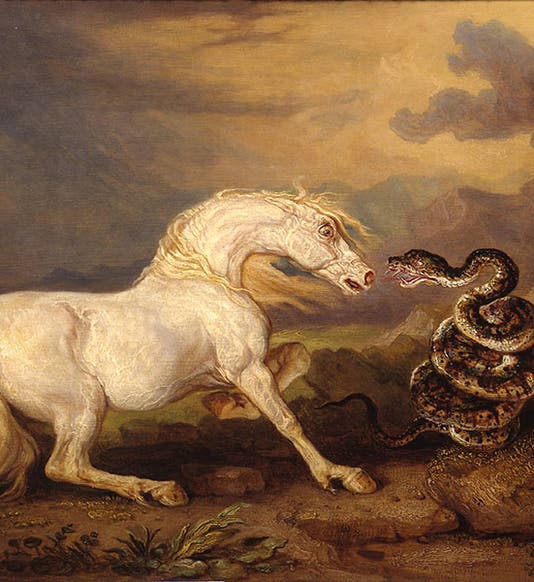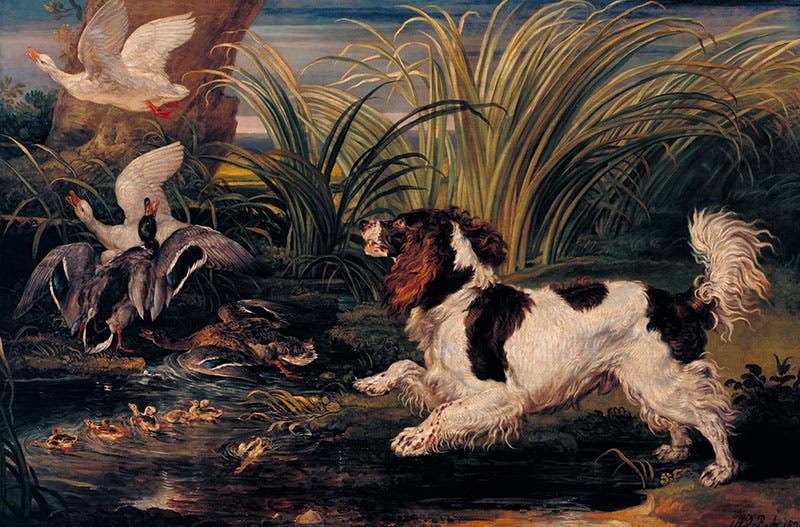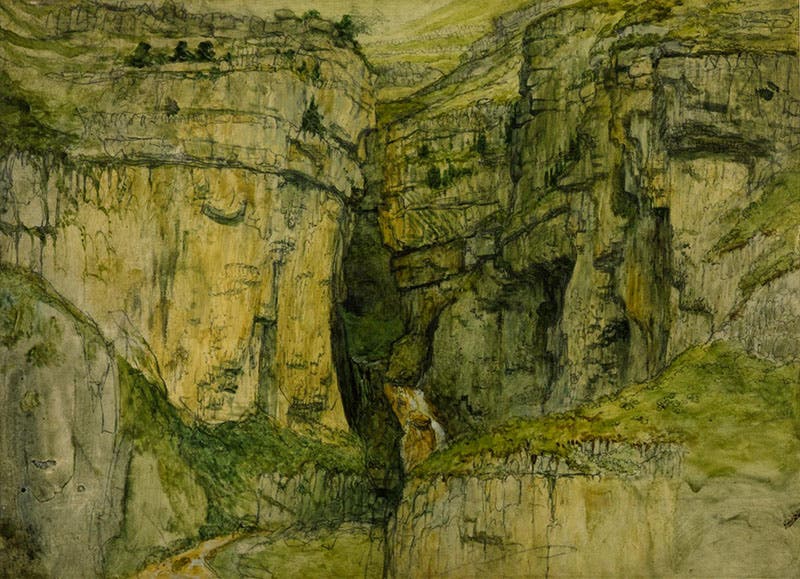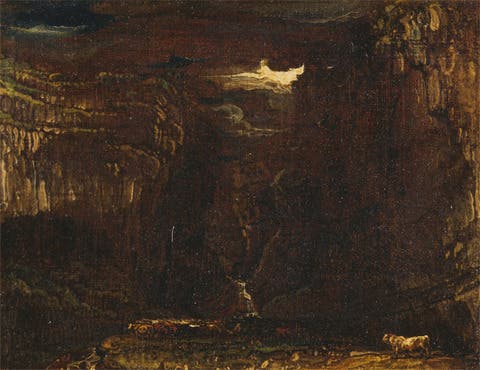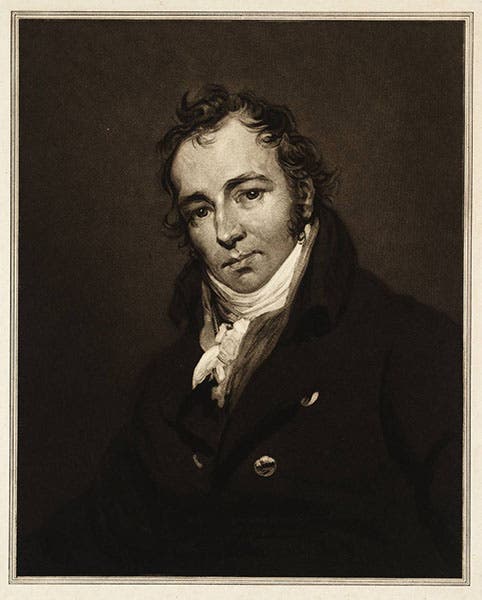Scientist of the Day - James Ward
James Ward, an English animal and landscape painter, was born Oct. 23, 1769. Ward is often described as one of the great animal painters of his time, but frenzied horses--and most of Ward's horses are in a state of high anxiety--are not particularly appealing to modern tastes. Nevertheless, The Moment (1831; first image) is worth viewing.
Ward’s dogs are less frenetic, as with A Spaniel Frightening Ducks (1821, second image), but we don’t give high laurels to dog painters today either. But when it came to landscapes, Ward was something else. In the early 19th century, England was well into the Romantic period, and paintings that invoked the grandeur and the occasionally terrifying face of nature were in high regard. We can only imagine the reaction to Ward's 1814 landscape, Gordale Scar, depicting part of a deep ravine in Yorkshire in northern England (third image).
His animals are there as well, but they are absolutely dwarfed by the limestone bluffs on either side. And the dark rolling clouds would make anyone feel uneasy. The most staggering feature of this painting is its sheer size--it is 12 feet tall and 14 feet long, one of the largest landscapes of the era. All three of these paintings are in Tate Britain in London, but Gordale Scar is not currently on display, which seems a great shame.
Tate Britain has a large number of Ward’s paintings and quite a few sketches, such as many preliminary drawings for Gordale Scar (fourth image). The other major repository for Ward’s work is the Yale Center for British Art in New Haven, which has over 30 of his paintings and a number of drawings, including yet another preliminary sketch for Gordale Scar, this time in color (fifth image).
Ward did quite a few self-portraits, mostly of himself as an older man, but we like this youthful portrait, a mezzotint that Ward engraved himself after a drawing by another artist (sixth image).
Dr. William B. Ashworth, Jr., Consultant for the History of Science, Linda Hall Library and Associate Professor, Department of History, University of Missouri-Kansas City. Comments or corrections are welcome; please direct to ashworthw@umkc.edu.

